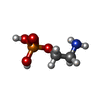+Search query
-Structure paper
| Title | Cryoelectron Microscopy Reconstructions of the Pseudomonas aeruginosa and Neisseria gonorrhoeae Type IV Pili at Sub-nanometer Resolution. |
|---|---|
| Journal, issue, pages | Structure, Vol. 25, Issue 9, Page 1423-11435.e4, Year 2017 |
| Publish date | Sep 5, 2017 |
 Authors Authors | Fengbin Wang / Mathieu Coureuil / Tomasz Osinski / Albina Orlova / Tuba Altindal / Gaël Gesbert / Xavier Nassif / Edward H Egelman / Lisa Craig /    |
| PubMed Abstract | We report here cryoelectron microscopy reconstructions of type IV pili (T4P) from two important human pathogens, Pseudomonas aeruginosa and Neisseria gonorrhoeae, at ∼ 8 and 5 Å resolution, ...We report here cryoelectron microscopy reconstructions of type IV pili (T4P) from two important human pathogens, Pseudomonas aeruginosa and Neisseria gonorrhoeae, at ∼ 8 and 5 Å resolution, respectively. The two structures reveal distinct arrangements of the pilin globular domains on the pilus surfaces, which impart different helical parameters, but similar packing of the conserved N-terminal α helices, α1, in the filament core. In contrast to the continuous α helix seen in the X-ray crystal structures of the P. aeruginosa and N. gonorrhoeae pilin subunits, α1 in the pilus filaments has a melted segment located between conserved helix-breaking residues Gly14 and Pro22, as seen for the Neisseria meningitidis T4P. Using mutagenesis we show that Pro22 is critical for pilus assembly, as are Thr2 and Glu5, which are positioned to interact in the hydrophobic filament core. These structures provide a framework for understanding T4P assembly, function, and biophysical properties. |
 External links External links |  Structure / Structure /  PubMed:28877506 / PubMed:28877506 /  PubMed Central PubMed Central |
| Methods | EM (helical sym.) |
| Resolution | 5.1 - 8.0 Å |
| Structure data | |
| Chemicals |  ChemComp-OPE: |
| Source |
|
 Keywords Keywords | PROTEIN FIBRIL / Melted helix / type IV pili |
 Movie
Movie Controller
Controller Structure viewers
Structure viewers About Yorodumi Papers
About Yorodumi Papers







 neisseria gonorrhoeae (bacteria)
neisseria gonorrhoeae (bacteria)